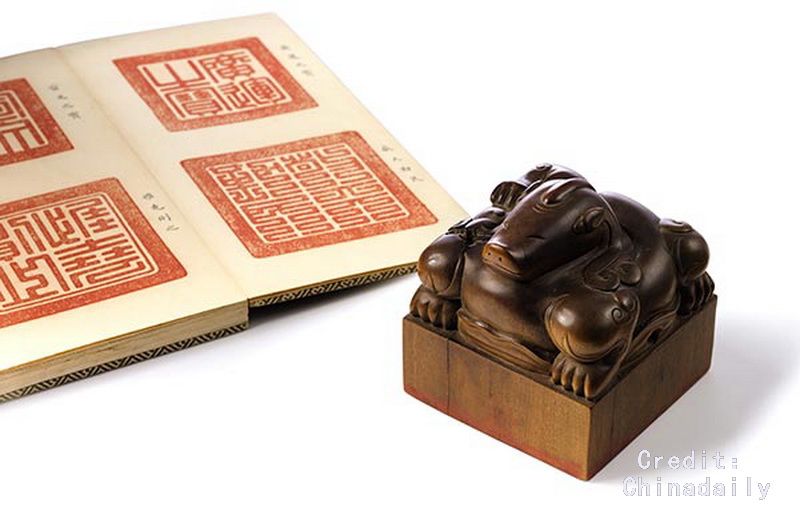Chinese seal carving, or the Art of Chinese Chop, is a fascinating art form with a rich history. It combines calligraphy, engraving, and sculpture into a unique cultural expression.
For foreign tourists visiting China, understanding this traditional art can provide deeper insights into Chinese culture. This guide aims to introduce you to the art of Chinese seal carving, its history, techniques, and cultural significance.
The History of Chinese Seal Carving
Chinese seal carving has a history spanning over three thousand years. It originated during the Shang Dynasty (1600-1046 BC). Initially, seals were used for official purposes. They served as a signature for documents and represented authority. Over time, the use of seals expanded beyond officialdom. They became personal symbols and artistic expressions.
During the Han Dynasty (206 BC – 220 AD), seal carving flourished. Seals became more elaborate and artistic. The materials used for seals also evolved. Jade, ivory, and other precious stones became popular. The art form continued to develop through subsequent dynasties. Each period contributed unique styles and techniques. Today, Chinese seal carving remains a respected art form, celebrated for its historical and cultural value.
The Art of Chinese Seal Carving
The art of Chinese seal carving is a meticulous process. It requires skill, patience, and creativity. Firstly, the artist selects the material for the seal. Traditionally, jade, soapstone, and ivory were used. Nowadays, artists also use materials like wood and plastic.
Next, the artist designs the seal. This involves choosing the characters and their arrangement. The design often includes calligraphy, which is an integral part of the art. The artist then carves the design into the material. This step requires precision and expertise. The final product is a small, intricately carved seal.
The Cultural Significance of Chinese Seals
Chinese seals hold deep cultural significance. They are not just tools for stamping documents. They represent identity, authority, and personal expression. In ancient China, seals were a symbol of power. Officials used them to authenticate documents and commands. Personal seals, on the other hand, reflected the owner’s personality and status.
Additionally, seals are an important part of Chinese calligraphy and painting. Artists use seals to sign their works. The seal adds a personal touch and enhances the aesthetic value of the artwork. In this way, seals bridge the gap between art and identity.
Techniques in Chinese Seal Carving
Chinese seal carving involves several techniques. Each technique requires specific skills and tools. The most common techniques include:
- Zhu Wen (Red Characters): This technique involves carving the characters in relief. The characters are raised above the surface. When stamped, they appear red, hence the name.
- Bai Wen (White Characters): In this technique, the characters are carved into the material. They appear as white spaces when stamped.
- Zhuan Shu (Seal Script): This is the traditional script used in seal carving. It is an ancient style of Chinese calligraphy characterized by its intricate and stylized characters.
- Line Engraving: This involves carving fine lines to create detailed designs. It requires a steady hand and precise control.
- Point Engraving: This technique uses small dots to form patterns and characters. It is often used to create shading and texture.
Each technique contributes to the overall beauty and uniqueness of the seal.
Materials Used in Chinese Seal Carving
The materials used in Chinese seal carving are as diverse as the techniques. Traditional materials include jade, soapstone, and ivory. These materials are prized for their durability and beauty. Jade, in particular, is highly valued. It symbolizes purity and virtue in Chinese culture.
Soapstone is another popular material. It is softer and easier to carve than jade. This makes it a favorite among beginners. Ivory, though less common today, was traditionally used for its smooth texture and fine grain.
Modern seal carvers also use materials like wood and plastic. These materials are more affordable and accessible. They offer a wider range of possibilities for creative expression.
Tools for Chinese Seal Carving
Seal carving requires specialized tools. The most important tool is the carving knife. There are various types of carving knives, each designed for specific techniques. For example, a flat knife is used for broad cuts, while a pointed knife is used for detailed work.
Other essential tools include ink and a seal pad. The ink is used to test the seal during the carving process. The seal pad is a small cushion soaked with ink. It allows the artist to see the impressions made by the seal.
Additionally, magnifying glasses and lamps are often used. These tools help the artist see fine details and work with precision.
Famous Chinese Seal Artists
Chinese seal carving has produced many famous artists. These artists have made significant contributions to the art form. One of the most renowned is Wu Changshuo (1844-1927). He was a master of both seal carving and painting. His works are celebrated for their boldness and elegance.
Another notable artist is Qi Baishi (1864-1957). He is famous for his distinctive style and innovative techniques. His seals are characterized by their simplicity and expressiveness.
The Xiling Seal Art Society, founded in 1904, is another important institution. It has played a crucial role in preserving and promoting Chinese seal carving. Many of its members are renowned seal artists. The society continues to be a hub for seal carving enthusiasts and experts.
The Process of Chinese Seal Making
The process of making a Chinese seal involves several steps. First, the artist selects the material. This choice depends on the artist’s preference and the intended use of the seal. Next, the artist designs the seal. This involves choosing the characters and their arrangement. The design is often sketched on paper before being transferred to the material.
Once the design is finalized, the artist begins carving. This step requires patience and precision. The artist uses various tools to carve the characters and designs into the material. The carving process can take several hours or even days, depending on the complexity of the design.
Finally, the artist tests the seal. This involves pressing the seal into ink and making an impression on paper. The artist checks for any imperfections and makes adjustments as needed. The finished seal is then polished and ready for use.
Visiting China: Exploring Chinese Seal Art
For tourists visiting China, exploring Chinese seal art, the Art of Chinese Chop is a must. Many cities have museums and galleries dedicated to this art form. The Xiling Seal Art Society in Hangzhou is a great place to start. It offers exhibitions, workshops, and demonstrations. Visitors can learn about the history and techniques of seal carving.
Another interesting destination is the Shanghai Museum. It has a comprehensive collection of ancient seals. The museum provides detailed information about the cultural significance of seals.
Additionally, many local markets sell handmade seals. Tourists can watch artisans at work and even commission custom seals. This is a great way to take home a unique piece of Chinese culture.
Understanding Chinese Seal Calligraphy
Chinese seal calligraphy is an essential aspect of seal carving. It involves writing characters in a specific style. The most common style is Zhuan Shu, or seal script. This script is characterized by its intricate and stylized characters.
Seal calligraphy requires skill and practice. The artist must have a deep understanding of Chinese characters. They must also be able to write with precision and creativity. Many seal artists are also skilled calligraphers.
Seal calligraphy adds a personal touch to the seal. It reflects the artist’s style and personality. It also enhances the aesthetic value of the seal. Understanding seal calligraphy can deepen your appreciation of Chinese seal art.
Chinese Seal Carving Workshops
For those interested in learning more about Chinese seal carving, workshops are a great option. Many cities in China offer seal carving workshops. These workshops provide hands-on experience and expert guidance.
Participants learn about the history and techniques of seal carving. They also get to try their hand at carving their own seals. Workshops usually provide all the necessary tools and materials. This is a fun and educational activity for tourists.
Workshops also offer a unique cultural experience. Participants can interact with local artists and learn about their craft. This is a great way to gain a deeper understanding of Chinese culture.
Chinese Seal Carving Museums
China has several museums dedicated to seal carving. These museums offer a comprehensive overview of the art form. They showcase a wide range of seals, from ancient artifacts to modern creations.
The Xiling Seal Art Society Museum in Hangzhou is one of the most famous. It has a vast collection of seals and related artifacts. The museum also hosts exhibitions and events.
The Shanghai Museum is another excellent destination. It has a dedicated section for seals. The museum provides detailed information about the history and significance of seals.
Visiting these museums can provide valuable insights into Chinese seal art. They offer a chance to see rare and exquisite seals up close.
In conclusion, Chinese seal carving, the Art of Chinese Chop ,is a fascinating art form with a rich history. It combines calligraphy, engraving, and sculpture into a unique cultural expression. For foreign tourists, understanding this art can enhance their travel experience. From the history and techniques to the cultural significance, there is much to explore.
Visiting museums, attending workshops, and interacting with local artists can provide deeper insights. Whether you are an art enthusiast or a curious traveler, Chinese seal carving offers a unique and enriching experience.
As you plan your trip to China, consider adding Chinese seal art to your itinerary. You will gain a deeper appreciation of the country’s rich cultural heritage. Happy travels!
More China Survival Guide
Prepare for smooth travels with the China Survival Guide, your go-to resource for practical advice on navigating daily life in China. From essential language tips and transportation know-how to safety guidelines and local etiquette.



